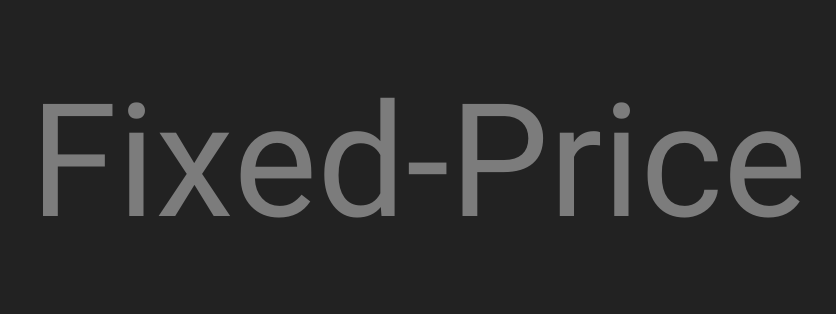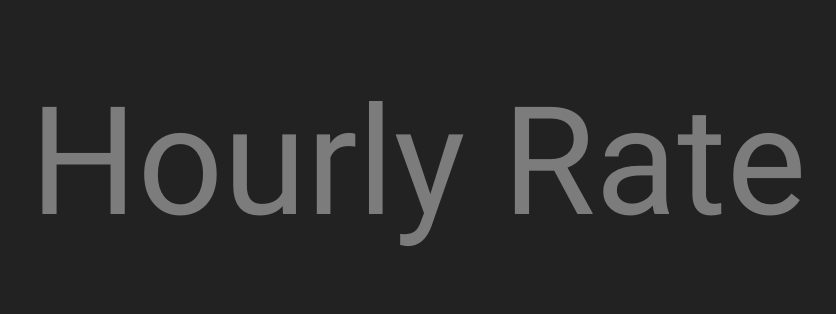Choosing the right pricing model in software development can be crucial for both profitability and risk management. Two popular approaches are fixed-price and hourly rate billing. Each has its advantages and challenges, and the best choice often depends on project specifics and business goals.
Fixed-Price


Advantages of Fixed-Price for Software Companies
-
Predictable Budget and Profit Margins
Fixed-price projects offer software companies a set budget, which simplifies profit forecasting and financial planning. With a clear agreement on scope, timeline, and cost, the company can manage resources more efficiently, reducing the likelihood of unexpected expenses. -
Attractive to Clients Who Need Cost Certainty
Many clients prefer fixed-price models for the predictability of costs. Software companies can appeal to clients with limited budgets or strict financial guidelines, as this model removes concerns about costs rising unexpectedly during the project. -
Efficient Resource Allocation
Since the project scope is well-defined from the start, software companies can allocate resources more effectively, ensuring that team members are available and ready for each phase. This structured approach helps with scheduling and reduces idle time for developers. -
Streamlined Project Management
Fixed-price projects generally require less frequent scope adjustments, which simplifies project management. With defined milestones, project managers can focus on delivering specific phases on schedule without the need for continuous renegotiation, allowing the team to stay on track more easily.
Disadvantages of Fixed-Price for Software Companies
-
High Risk of Underestimating Scope
If the project is underestimated, the software company may end up working additional hours without additional compensation. This risk increases in complex projects where requirements can be challenging to fully define at the outset, potentially leading to reduced profit margins. -
Limited Flexibility for Scope Changes
The fixed-price model often makes it difficult to accommodate new client requests without re-negotiating. If the client requests adjustments, the company must consider these as change requests, which can create delays and affect client satisfaction. -
Strain on Quality with Tight Deadlines
To meet the fixed budget, software companies might find themselves working under tight time constraints. This can lead to compromises on quality, as teams may prioritize meeting deadlines over in-depth testing and refinement, which could impact the end result.
How to Sell the Fixed-Price Model to Clients
-
Emphasize Budget Predictability
Highlight that a fixed-price model provides a guaranteed cost for the entire project, which can be highly reassuring for clients with limited budgets or strict financial planning. Fixed-price projects allow clients to budget without worrying about cost increases. -
Present a Clear Timeline with Milestones
Fixed-price projects benefit from a structured timeline with clear milestones, offering clients a strong sense of progress. Emphasize how this model breaks the project into manageable phases, where clients can see regular results without any cost implications for scope changes. -
Stress the Focus on Deliverables and End Goals
Let clients know that a fixed-price approach centers on achieving the defined objectives and deliverables. This approach is especially attractive to clients looking for a complete, finalized product by the end of the project, rather than ongoing adjustments. -
Discuss a Structured and Transparent Scoping Process
Explain the scoping process in detail to set clear expectations. By involving the client in scoping, software companies can help them understand the process and ensure all requirements are covered, minimizing changes and surprises. -
Showcase Fixed-Price Success Stories
Share past successful fixed-price projects to build trust and demonstrate reliability. Highlight projects where the company delivered on time and on budget, reinforcing the predictability and reliability of the fixed-price model.
Additional Selling Points for the Fixed-Price Model
-
Alignment with Corporate Budget Cycles
Many clients, especially larger organizations, operate on fixed annual budgets. Fixed-price projects fit seamlessly into their budgeting cycles, as costs are predefined and can be approved upfront. Emphasize that your company’s fixed-price model allows clients to avoid unexpected financial impacts and stay within their fiscal limits. -
Clear Project Closure and Handover
In fixed-price projects, the completion point is clear, making it easy for clients to plan for final delivery, handover, and deployment. Software companies can use this clarity to assure clients that the project will be wrapped up neatly, with minimal loose ends and a clear endpoint for resource allocation and planning. -
Enhanced Team Motivation and Focus
Fixed-price projects allow your team to work with a specific goal in mind, as there is a clear end and set deliverables. This often leads to enhanced focus and motivation, as developers understand exactly what they need to achieve, reducing the risk of shifting priorities or distractions. For clients, this also means a more cohesive team effort directed toward a unified outcome. -
Reduced Administrative Overhead
Since fixed-price projects require fewer ongoing changes and renegotiations, they tend to reduce the administrative burden associated with constant approvals or budget adjustments. This is beneficial for both the software company and the client, as it allows the team to focus more on development and less on management logistics. -
Better for Long-Term Partnerships
For clients seeking to establish a strong, ongoing relationship with a software company, fixed-price projects can serve as a trial for future collaboration. If the client is satisfied with the results, they’re more likely to return for new projects, building a long-term partnership. Use this model as a way to showcase your company’s commitment to delivering quality, reliability, and predictable outcomes.
By presenting the fixed-price model as a reliable, organized, and budget-aligned approach, software companies can attract clients who prioritize financial stability and clarity in project execution. This model’s advantages in predictability and efficiency can establish your company as a trusted partner for projects with well-defined goals and timelines.
Typically, about 55-65% of software projects are billed as Fixed-Price, especially for projects with clearly defined requirements and budgets. This model is popular among clients who prefer cost certainty and want a complete, structured outcome. It’s particularly common for short-term projects or those that don’t require frequent changes, making it the most widely used pricing model in the software industry.
Hourly Rate


What’s More Profitable?
Profitability can depend on the type of project, client expectations, and the software company’s strengths.
-
Fixed-Price is often more profitable for well-defined projects with stable requirements. Software companies can set a premium price based on the project scope, and efficient teams can deliver within or below budget, maximizing profit. However, if project requirements are underestimated or change significantly, this model can erode profitability due to the need to cover additional, unplanned work at no extra cost.
-
Hourly Rate tends to be more profitable for projects with evolving requirements or where clients are likely to request ongoing adjustments. By billing for every hour worked, software companies mitigate the risk of scope creep and unpredictable requirements. This model also allows companies to earn revenue as they scale resources to meet increasing project demands. However, profitability can be impacted if the client limits the hours due to budget concerns or if productivity is not consistently high.
In Summary:
- Fixed-Price can be more profitable for projects that are predictable and well-scoped, especially for companies that can deliver efficiently within set budgets.
- Hourly Rate is often more profitable for long-term, flexible projects that require frequent updates, as it allows for consistent billing and compensation for all work completed.
Ultimately, the decision between fixed-price and hourly billing should align with your project's needs and your company’s risk tolerance. By understanding the strengths and weaknesses of each model, businesses can make more informed choices that support successful, profitable projects.










